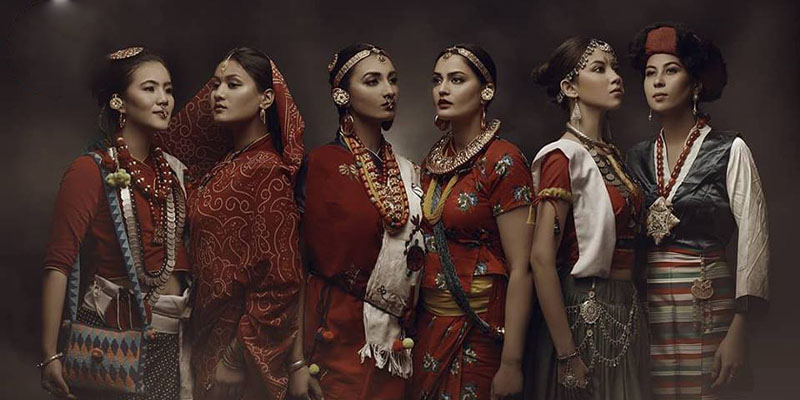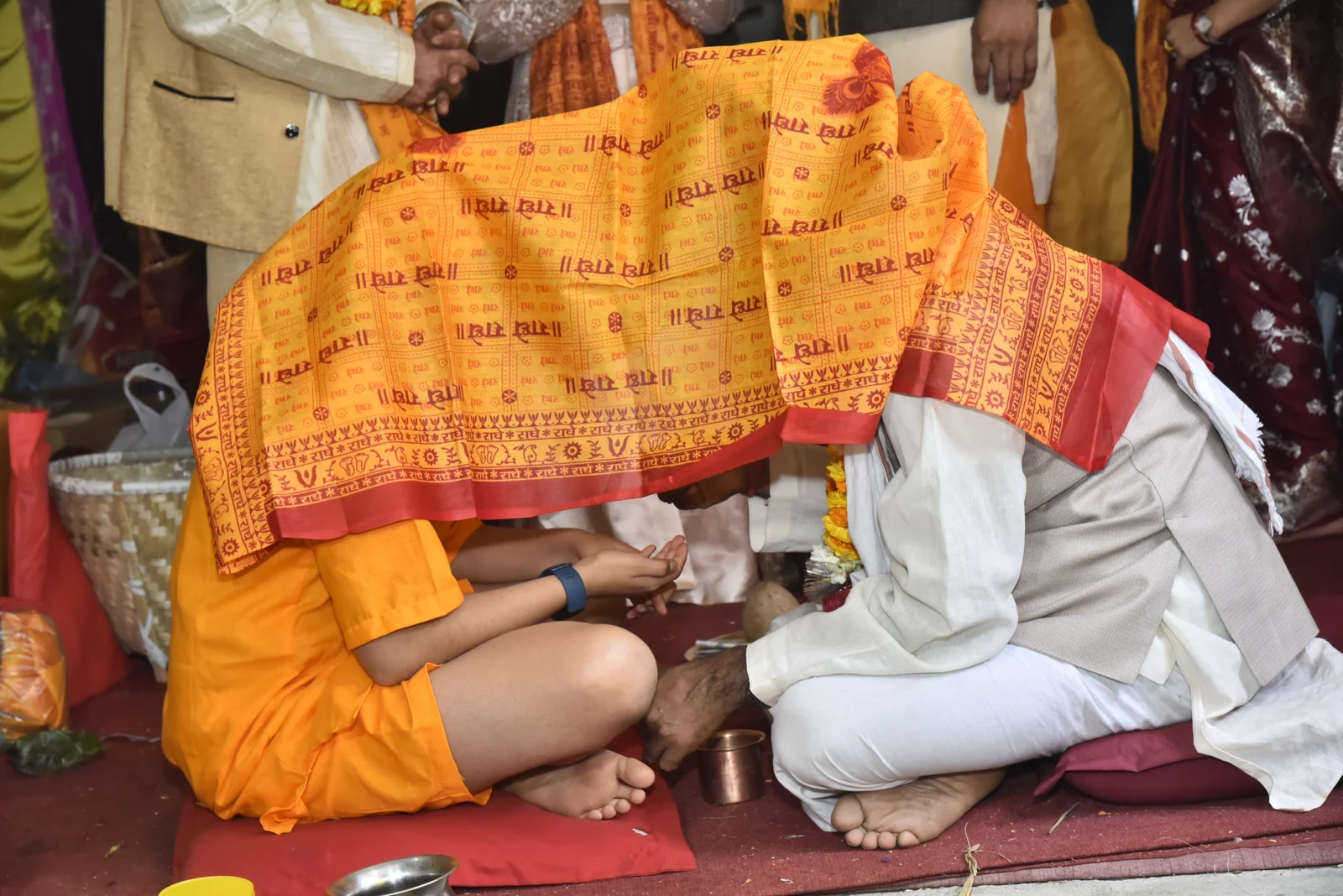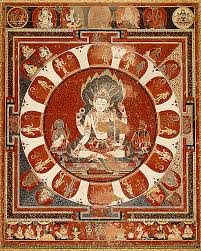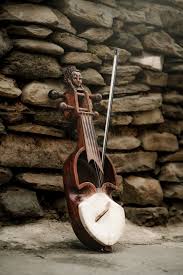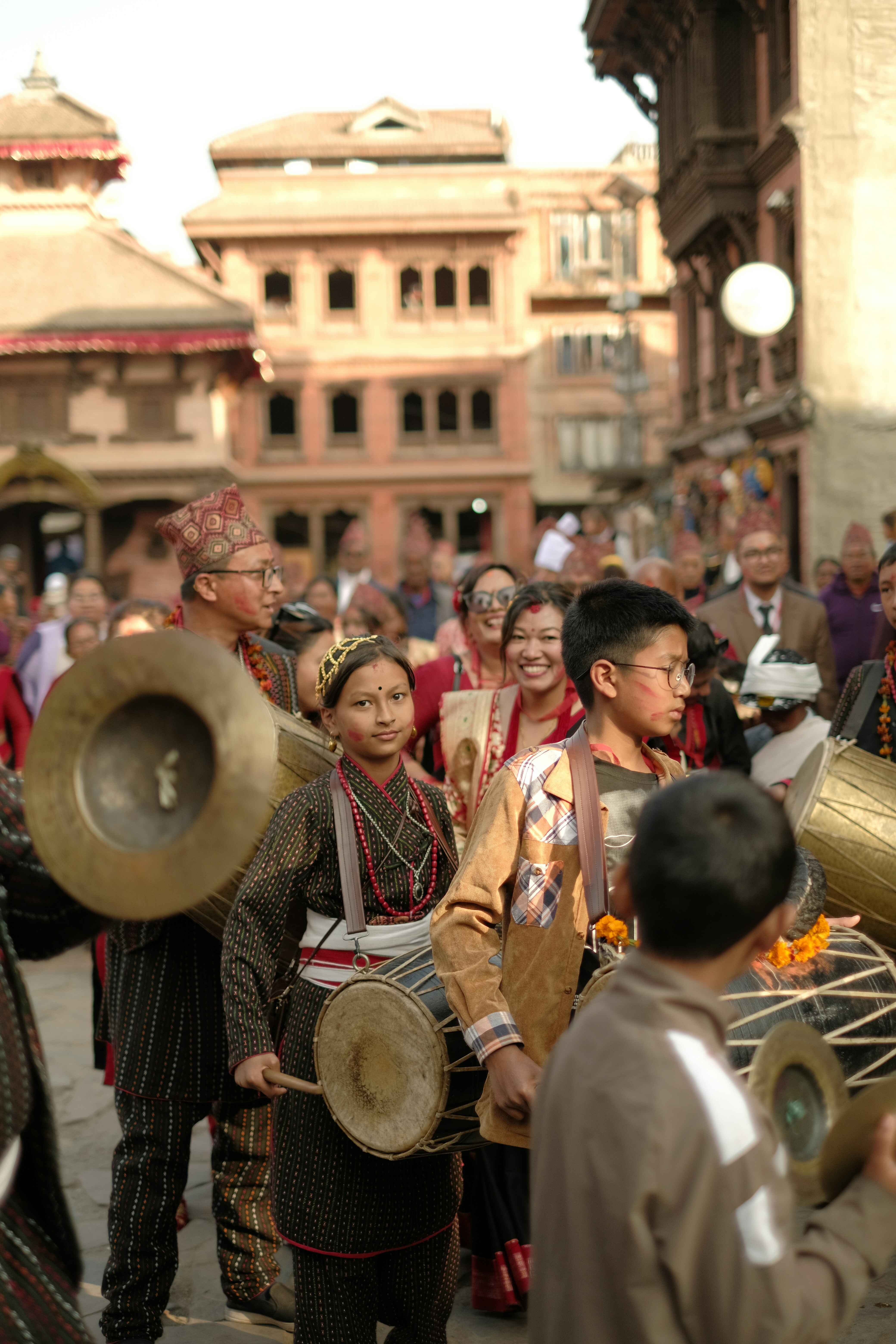Share this Article
The Vanishing Language of the Gandharvas: A Dying Melody of Nepal’s Cultural Soul
In the intricate mosaic of Nepal’s cultural and ethnic diversity, few communities embody the union of identity, language, and music as completely as the Gandharvas. Traditionally known as traveling musicians, messengers, and oral historians, the Gandharvas — or Gaine as they are commonly called — have for centuries traversed the hills and valleys of Nepal, singing songs of kings and heroes, heartbreak and migration, daily toil and national pride. Central to their cultural repertoire was not only their iconic sarangi (a four-stringed fiddle), but also their unique language, which has, like their music, been facing a gradual yet painful extinction.
The Gandharva language — a distinct dialect enriched by metaphor, idiom, and musical phrasing — is not just a means of communication. It is a repository of oral traditions, mythologies, and cultural nuance. As Nepal modernizes and digital communication replaces oral storytelling, this precious linguistic and cultural heritage teeters on the edge of disappearance.
Origins and Identity of the Gandharvas
The Gandharvas are traditionally part of the occupational caste structure of Nepal. Historically assigned to the Damai-Gaine caste, they were considered “low-caste” artisans under the Hindu caste system. Despite marginalization, Gandharvas developed a niche that was both culturally significant and socially functional. They served as bearers of news, entertainers, and documenters of local and national events through song.
Roaming from village to village, Gandharvas sang songs that informed, delighted, and provoked. Their music was rich with improvisation and social commentary. In a largely non-literate society, they were historians and critics, relaying stories and truths that others could not speak aloud. For example, a Gandharva might sing about political corruption, social injustice, or a lost love — all veiled in poetic metaphor and musical elegance.
The Linguistic Nuance of the Gandharvas
While Gandharvas spoke regional dialects depending on their settlement — such as Nepali, Magar, or Gurung — many older generations had their own speech patterns, idiomatic expressions, tonal inflections, and metaphoric shorthand that were passed on orally. This unique sociolect allowed Gandharvas to maintain a distinct cultural identity even as they moved across linguistic and geographic boundaries.
Their language was intrinsically tied to their music. Phrases used in Gandharva songs often employed rhythmic schemes and tonal modulation that made them easily memorizable and resonant. This lyrical structure enabled their oral history to persist for generations.
However, the lack of written records has made the preservation of these speech forms extraordinarily difficult. Unlike more formal languages with grammar rules and written scripts, Gandharva language lived in the air — carried in voice, music, and memory.
Oral History as Archive
Gandharva songs, many of which contain autobiographical and historical content, serve as oral archives. These ballads recorded real events: battles during Nepal’s unification, foreign migrations, family feuds, and royal dramas. In villages where radio or newspapers had not reached, the Gandharva was the first to report a king’s death or a war in the west.
Some of the most poignant Gandharva songs reflect seasonal labor migration to India and beyond. The songs often mourned separation, praised foreign lands, or subtly criticized those who abandoned traditional lifestyles. These songs were composed in local dialects but featured linguistic fingerprints — special rhyming schemes, idioms, and structures — unique to the Gandharvas.
Thus, their songs were a type of linguistic and cultural heritage, functioning both as performance and preservation. But as modernity encroached, the very conditions that enabled oral traditions to flourish began to vanish.
Decline of Language and Profession
The past five decades have seen a steep decline in the Gandharva profession. Several factors contribute to this: urbanization, access to digital media, legal and social changes to caste hierarchies, and new forms of entertainment. As radio, TV, and smartphones became widespread, the need for oral news carriers and traditional musicians declined.
At the same time, changes in caste dynamics allowed younger Gandharvas to pursue professions outside their traditional roles. While this has led to greater social mobility and economic opportunities, it has also accelerated the decline of traditional knowledge, especially the oral and linguistic heritage.
Today, many young Gandharvas neither play the sarangi nor sing the songs their ancestors once did. Even fewer understand or use the idiomatic language associated with their community. As elders pass away, their knowledge dies with them, often undocumented and unrecorded.
Efforts at Revival and Documentation
Recognizing the cultural crisis, several initiatives have emerged to preserve Gandharva music and language. Ethnomusicologists, cultural anthropologists, and NGOs have begun recording Gandharva songs, interviewing elders, and archiving performances.
One prominent figure in this effort was Jhalak Man Gandharva, a legendary singer who brought the sarangi and Gandharva voice to national attention. His recordings are not only musical gems but also linguistic artifacts, containing rare examples of Gandharva idiomatic language and oral structure.
Institutions like the Nepal Music Center and Lok Sewa have also supported efforts to teach sarangi playing to younger generations. Workshops and community programs are slowly reintroducing traditional musical education. However, the focus often remains on the music, not the language.
There is a pressing need for linguistic documentation — not just songs, but conversations, vocabulary lists, grammar structures, and oral histories in the Gandharva idiom. Linguists have called for community-led preservation, where Gandharvas themselves are involved in identifying, recording, and teaching their linguistic heritage.
The Role of Schools and Cultural Policy
Integrating Gandharva heritage into educational curricula could be a powerful way to preserve their language. Schools in regions with significant Gandharva populations can introduce folk music and oral history classes that emphasize cultural diversity and pride.
Moreover, national cultural policy must go beyond showcasing traditional dress and music on festivals. It must recognize the endangered status of intangible heritage like language, oral storytelling, and dialects. Policy support could include grants for research, funding for language revitalization projects, and national recognition of Gandharva linguistic and cultural contributions.
Diaspora and Digital Platforms
The Gandharva diaspora — primarily settled in urban centers or working abroad — can play a role in cultural preservation. Through social media platforms like YouTube, Facebook, and TikTok, younger Gandharvas are beginning to share music and memories. Digital storytelling has the potential to bridge generational gaps.
Yet, the danger remains that digitalization could lead to a flattening of content — where visual appeal replaces linguistic depth. Songs may survive, but stripped of their original idioms and narrative richness. This is why documentation and education must accompany digital presence.
Language as Identity
Language is more than vocabulary. It is a worldview. The Gandharva language shaped how its speakers understood community, performance, time, and space. Words that describe weather patterns, emotions, social relationships, or musical tempo may have no direct translation in standard Nepali. Losing the language means losing a unique lens on reality.
Furthermore, linguistic heritage is tied to dignity. Historically stigmatized for their caste, many Gandharvas internalized shame around their identity. Reviving their language — and giving it institutional recognition — can be a step toward cultural reclamation and empowerment.
Intergenerational Dialogue
Perhaps the most potent tool in language preservation is intergenerational dialogue. Elders who still remember and speak the Gandharva idiom must be encouraged to share it with youth. Family gatherings, musical evenings, and storytelling sessions can become informal classrooms.
Recording these interactions — and translating them for wider audiences — can serve both academic and cultural purposes. Audio archives, bilingual storybooks, and podcasts are modern tools that can keep the Gandharva language alive in ways that resonate with younger audiences.
Conclusion
The vanishing language of the Gandharvas is a cultural emergency wrapped in silence. With each passing elder, a chapter of Nepal’s oral history fades away. Yet, hope lies in recognition, education, and creative adaptation.
To preserve the Gandharva language is to honor a community that served as Nepal’s traveling bards, social critics, and musical historians. It is to recognize that in their fading words lie the echoes of wars fought, love lost, fields tilled, and kingdoms built.
Nepal must act — not only to archive what remains but to revive what can still be spoken, sung, and celebrated. In doing so, the nation does not merely save a dialect. It rediscovers a voice that once carried its truths, melodies, and dreams through the hills.
The Gandharva language may be vanishing, but with timely effort, it need not be lost.
Categories:
Culture & Traditions
Tags:
TraditionalInstruments

